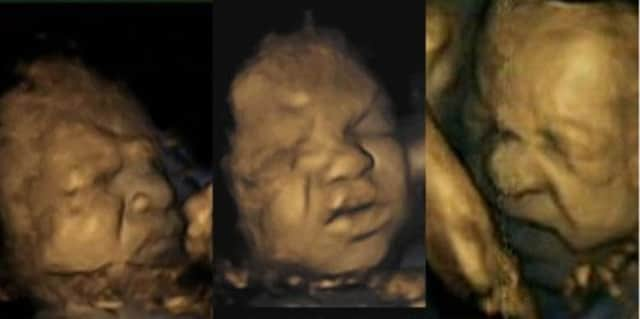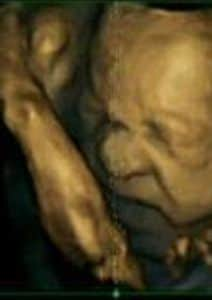Face to face with the secrets of infant development


Scientists using 4D scanning technology have found that unborn babies seem to “practise” grimacing while they are in the womb.
The technique of 4D scanning involves analysing 3D images over time, which is sometimes referred to as the fourth dimension.
Advertisement
Hide AdAdvertisement
Hide AdImages of foetuses analysed by researchers from Durham and Lancaster universities reveal what appear to be facial expressions of pain.


Researchers, who examined video footage from scans of 15 healthy babies, said that the process was “adaptive” and helped unborn babies to prepare for life after birth, when they have to communicate needs such as hunger by grimacing or crying.
Experts believe that the ability to express discomfort in this way is a “developmental process” which could also help doctors assess the health of a foetus and speed the detection of abnormalities.
The study, published in the journal PLOS One, discovered that when the mother was 24 weeks’ pregnant, unborn babies were only able to make simple expressions such as smiling. By 36 weeks, babies were able to create “complex multi-dimensional expressions” including simultaneously lowering their eyebrows and wrinkling their noses to form a “pain” face.
Lead researcher Dr Nadja Reissland, of Durham University’s department of psychology, said: “It is vital for infants to be able to show pain as soon as they are born so that they can communicate any distress or pain they might feel to their carers and our results show that healthy foetuses ‘learn’ to combine the necessary facial movements before they are born.
“This suggests that we can determine the normal development of facial movements and potentially identify abnormal development, too.
“This could then provide a further medical indication of the health of the unborn baby.
“It is not yet clear whether foetuses can actually feel pain, nor do we know whether facial expressions relate to how they feel.”
Advertisement
Hide AdAdvertisement
Hide AdProf Jane Norman, who runs a research centre for Tommy’s baby charity at the University of Edinburgh, said: “As human beings, we take a lot of notice of people’s expressions and infer a lot from that and it’s interesting to think that babies in the womb are making these, too.
“What we don’t know is whether the expressions we’re interpreting as pain or distress actually mean that, or whether the baby’s just practising.”
Further research will test whether the development of facial expressions is delayed if foetuses experience damaging conditions such as the effects of maternal smoking or drinking.